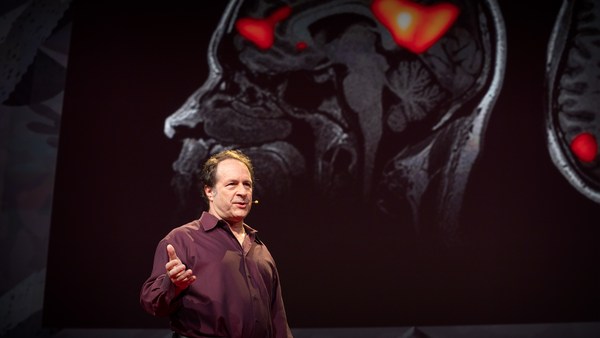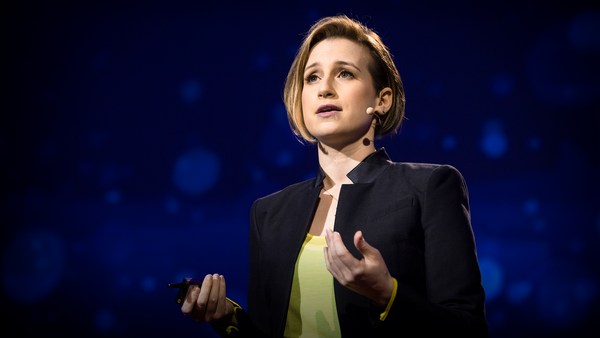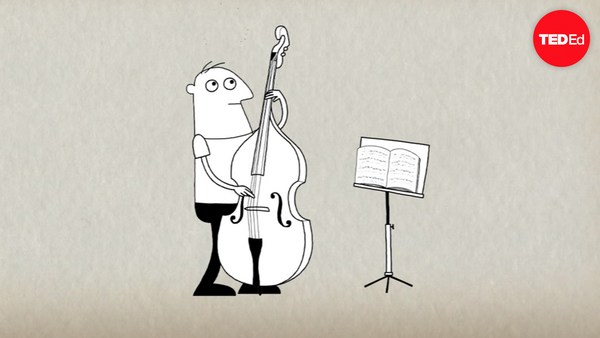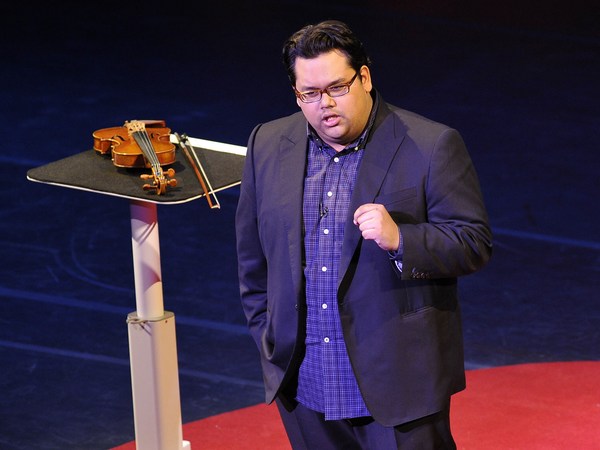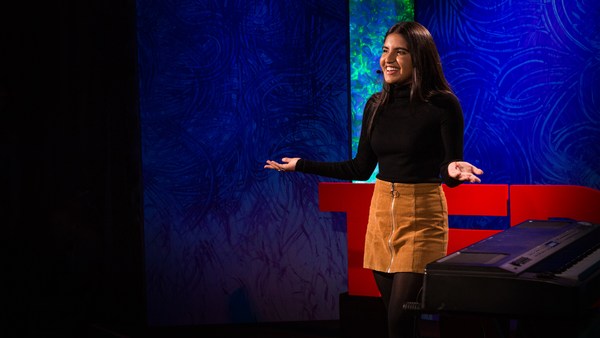At various points over the past 20 years, I've studied two fundamental human experiences that have taught me an awful lot about emotion and that may hold the keys to a revolution in psychiatry. The first is how we experience music. The second is how we experience psychedelic drugs such as LSD and magic mushrooms, or psilocybin, which is the active component in magic mushrooms.
You may be wondering what these two things have in common outside of Woodstock. After all, music is not a physical substance. It can be described as a limited set of vibrations in the air that can be detected by your ear. And music may seem to have more to do with aesthetics than with biology or chemistry. Psychedelic drugs, on the other hand, are physical substances. They are chemical compounds that you can ingest that directly interact with brain chemistry and change your experience of the world. This change is temporary, but the effects of this change can alter the course of your life. But let's face it: psychedelics have the potential to trigger unexpected and potentially dangerous effects. So what could these two very different things possibly have in common?
I've found that music and psychedelics can impact our well-being in powerful and complementary ways. Music can have a direct impact on our emotions, with measurable impacts in the brain; psychedelic drugs, under the right circumstances, may have therapeutic effects. These effects can be manifest in patterns that we can study and document with brain scans. And together, and leveraged in a purposeful fashion, music and psychedelics may have an even greater healing impact on patients. What's more, these effects can be manifest in healthier and happier lives and more integrated personalities.
I began my journey into the mental health benefits of music long before I ever intended to make such a journey. For roughly half of my life, I've been a musician, having played in community orchestras, community theaters, wedding bands, a salsa-merengue band. I was a member of a string band in Philadelphia for many years. And for the better part of my formative years, I was the drummer in a Weezer-Nirvana cover band that morphed into a hardcore punk band.
(Laughter)
That's right. Drummer in a punk band.
But it wasn't until I really began my career in psychology and neuroscience that I began to also appreciate how widely and how deeply we as a species, both implicitly and explicitly, use music as a tool to try to regulate our emotions and to heal. And for some of us, music keeps us going. For others, music isn't quite enough. For me, this led to some fascinating questions. I began to use music as a tool to study emotion and memory in the brain.
My first scientific study was focused on music-evoked nostalgia. Nostalgia's a rich and bittersweet emotion that is intimately tied up with our autobiographical memories. We can often encounter nostalgia in unexpected places. You may have had the experience of driving down the highway, turning on the radio or firing up your favorite music recommendation service, and you hear a song you haven't heard in ages, and you get immediately transported back in time and dumped into this immersive memory -- something you haven't thought about in ages but was very meaningful to you -- maybe wedding day or senior prom or the birth of your first child or the death of a loved one. Music can serve as a powerful context cue for deeply meaningful and intensely vivid nostalgic memories such as these.
Nostalgia, in a sense, is deeply woven into our sense of self. Who are we at our most authentic selves? By connecting us with our emotional histories, nostalgia can help us to stave off sadness, loneliness, existential threat and even the imminence of death and the approaching horizon of our lives as we age.
To try to get a better understanding of how music may tap into nostalgia and what that may be doing in the brain, I began to work with computational models of music cognition. I applied these models to interrogate brain activity that was recorded while people were listening to nostalgia-evoking and nonnostalgia-evoking music. And importantly, at least to a brain geek like me, I found that nostalgia was able to recruit a wide network of brain regions involved in multiple levels of different cognitive processes. Whereas nonnostalgic music could recruit brain regions such as Heschl's gyrus, involved in basic auditory processing, or Broca's area, which is involved in processing grammar and syntax not only in language but also in music, nostalgia was able to recruit these brain regions and more. Brain regions such as the substantia nigra involved in reward processing or the anterior insula involved in the visceral experience of emotion or brain regions in the inferior frontal gyrus that are involved in autobiographical memories. Nostalgia was also able to recruit a wide network of brain regions in prefrontal, frontal, cingulate, insular, parietal, occipital and subcortical brain regions that span nearly all of our cognitive faculties. This may explain why nostalgia can have such an outsized impact on us.
But as powerful as it is in the moment, the salve of music-evoked nostalgia eventually fades. Nostalgia may be more of a Band-Aid, less of an antibiotic and typically far from a surgical intervention for our emotional health. Music can draw out nostalgia and music and nostalgia can move our feelings, but how do we make these feelings stick?
After studying the nostalgic brain, I joined a team at Johns Hopkins University that was studying the effects of psychedelic drugs, and I quickly began to learn how deeply a piece of music could impact a person during a psychedelic experience. I was previously vexed by the difficulty in predicting precisely what musical stimulus would evoke precisely what response within a given individual. A song that evokes nostalgia in one person could just as easily evoke disinterest or disgust in another person. I began to learn how deeply most music seemed to impact most people during psychedelic experiences.
Since at least the late '50s, the value of using music to help people to navigate psychedelic experiences was clear. We continue this tradition in our modern research, asking volunteers to listen to music during the course of a psychedelic therapy session, and despite most people being mostly naive to the music that we play before they get into the sessions, after these sessions, our volunteers practically beg us for the playlists. And some of them report returning to the songs that were most impactful to them during their psychedelic experience weeks, months and even many years after the experience. Somehow, these songs can turn into touchstones that can rekindle the most powerful and impactful and insightful experiences that people encountered during their psychedelic sessions.
Of course, I had to know what was going on here. I began to deploy my batteries of questionnaires and my carefully crafted experiments and my big, fancy MRI machines to try to determine just what could be happening during these experiences that could explain the depth of impact that people were encountering. At a basic psychological level, my colleagues and I determined that, for instance, LSD can increase positive emotions that are uniquely encountered during music listening. This may have relevance just by itself for healthy individuals as well as people suffering from mood and substance-use disorders. But what was happening in the brain?
Earlier we learned that the entire brain listens to nostalgic music. When applying computational models of music cognition to interrogate brain activity that was recorded during music listening under the effects of LSD, we found that the entire brain was listening to music and psychedelics were turning up the gain. Where nostalgia could recruit brain regions involved in language, memory and emotion, psychedelics were recruiting these brain regions at least twice as strongly. Brain regions such as the thalamus, that's involved in basic sensory processing or the medial prefrontal cortex and the posterior singular cortex, which can be involved in memory and emotion and mental imagery. These brain regions were recruited up to four times as strongly during the effects of LSD than without LSD. Psychedelics turn the knob up to 11. Sensory information is more richly experienced in the brain; emotions, memories and mental imagery are supercharged, and it may be the wholesale and strong recruitment of a wide range of brain regions during these experiences that is the necessary key to unlocking change that sets these drugs and these experiences apart from others.
And the effects can be long-lasting. In a study of healthy individuals, I demonstrated that a single high dose of psilocybin could reduce negative affect in volunteers for at least a week after psilocybin, and increase positive affect for at least a month after a single high dose of psilocybin. The reduction in negative affect that we observed after psilocybin administration was accompanied by a reduction, one week after psilocybin, in the response of a primitive brain region called the amygdala to emotional stimuli. In a separate study in patients with major depressive disorder, not only did we observe a substantial decrease in depression severity in most of our patients after two doses of psilocybin, but we also observed a reduction in the amygdala response to negative affective stimuli, specifically, one week after psilocybin. This reduction in amygdala response was associated with an enduring reduction in depression severity for at least three months after psilocybin administration, but frankly, we're still counting.
So what does this all mean? It means that music and psychedelics may be able to alter the entire brain for a period of time, and that may lead to a change in neural circuitry that may be stuck in patterns of negative emotional bias. This may be able to give people a period of relief from the grip and the claws of negative emotion. And that may be just enough to give someone access to new perspectives on their selves and their lives and begin on the road to healing from years of depression.
These drugs are early in stages of research, but they're now being researched for a wide range of medical indications. There's evidence growing that psychedelics may be effective in helping to treat mood disorders such as major depressive disorder, treatment-resistant depression and the depression and anxiety that accompany a late-stage cancer diagnosis. There's also evidence accumulating that psychedelics may be effective in helping to treat a wide range of substance-use disorders, including smoking, drinking and cocaine use. Additional studies are either being planned or are already underway to determine whether psychedelics may be effective in treating an even wider range of intractable disorders such as OCD, PTSD, opioid-use disorder and anorexia.
At this point it might be reasonable to take a step back and say, "Are psychedelics being sold as a panacea?" And if so, we should be rightfully skeptical. Why should we expect such a small family of compounds to be so effective in treating such a wide range of disparate disorders? Here's a perspective we might consider. Some of these disorders share a common thread. At some level, mood disorders and substance-use disorders involve negative affect and a disconnection from our most authentic selves. Psychedelics may break that mold. Psychedelics and music may represent a one-two punch that can operate on psychological neural processes such as negative affect that cut across and contribute to multiple disorders. It may be that targeting such transdiagnostic processes is what's necessary to really help people to develop the resources that they need to begin to recover from years of depression and substance use.
They say you never get a second chance to make a first impression, and that may be true for psychedelic drugs. After all, no matter how much data come out for the potential of therapeutic effects of these drugs, there are still some who are stuck on the stigma from the '60s and '70s: myths of the wildly addictive properties of these drugs or myths of genetic abnormalities or birth defects after being exposed to these drugs, or fears that people are going to lose their minds and go insane -- or maybe even most pervasive is the sense that these effects are necessarily real and that they're a necessary outcome of having been exposed to these compounds. It may be time to change our thinking on that point.
No one should expect psychedelic drugs to work for everyone. No one should expect psychedelic drugs to work for everything. They're powerful compounds that need to be administered under carefully controlled circumstances. And there are almost certainly people in this world for whom psychedelics are incredibly dangerous. But ... antibiotics administered to the wrong person under the wrong conditions can be incredibly dangerous, if not worse. But administered to the right person under the right conditions, antibiotics save lives. Administered to the right people under the right conditions, psychedelic drugs may save lives.
It can often feel like it's impossible to heal our hearts and our minds and to grow, but I truly believe that we all have the resources within ourselves to do just that. The challenge is often identifying and connecting with those resources, and it may be that psychedelics and music can help people to do just that. Together, psychedelics and music may be able to open our minds to change and direct that change, reconnect us with our most authentic selves and allow us access to the things that really allow us to make meaning in this world and reconnect with our most authentic selves.
Thank you.
(Applause)
